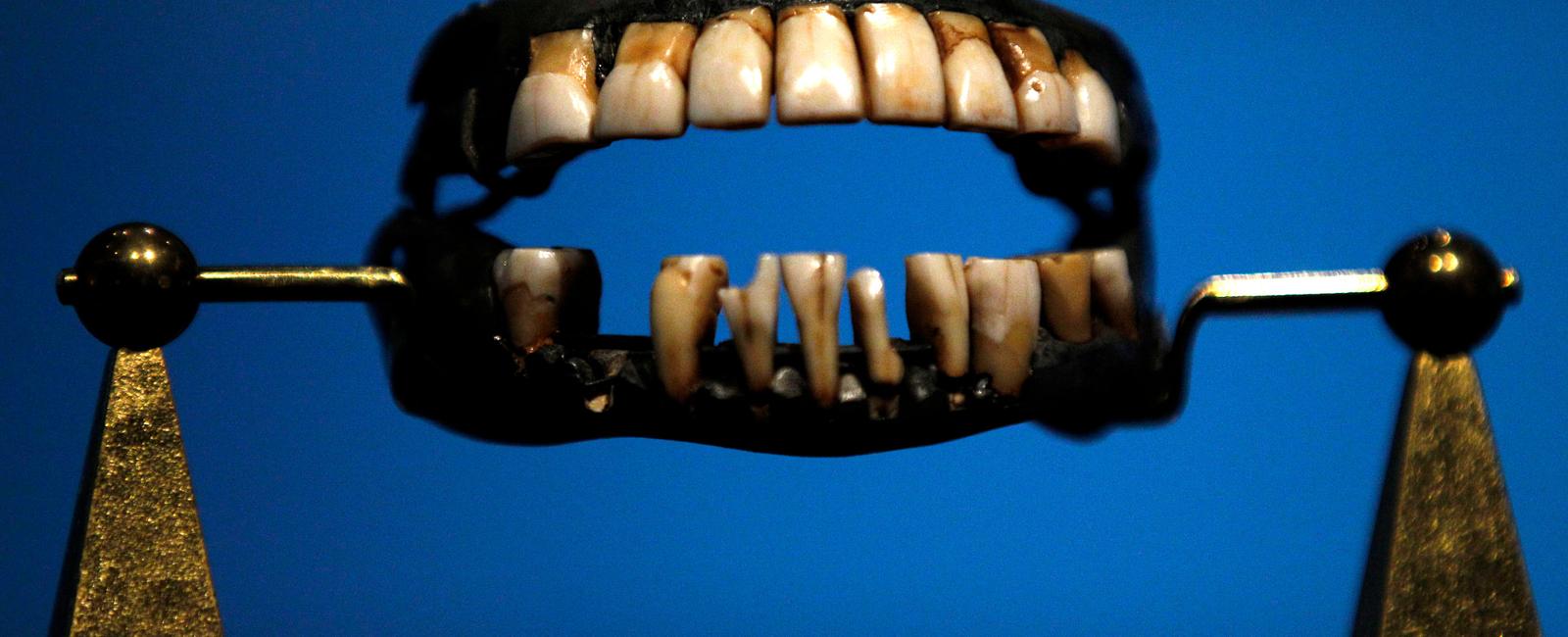Before dentures were invented teeth were extracted from the mouths of dead soldiers for use as prosthetics

Before Dentures: The Grisly History of Teeth Extraction from Dead Soldiers

In the past, dental prosthetics as we know them today were far from commonplace. Before dentures were invented, a startling fact emerges from history – teeth were extracted from the mouths of deceased soldiers to be used as prosthetics. The practice may sound macabre, but it played a significant role in the evolution of dentistry and the search for viable tooth replacements.
The Birth of a Macabre Solution
The use of teeth from fallen soldiers as prosthetics dates back to the early 19th century. During this time, large-scale battles, with their considerable human casualties, created a unique opportunity for dental innovation. One such battle that made a lasting impact was the Battle of Waterloo, fought in 1815.

The Gruesome Undertaking
After the Battle of Waterloo, thousands of soldiers lay dead on the battlefield. Amidst the horror of war, scavengers known as “tooth pullers” roamed the battlegrounds, extracting teeth from the deceased soldiers’ mouths. Though his motives were rooted in dental innovation, the notorious Waterloo Teeth Dealer, known as Claude Martin, organized this gruesome endeavor.
These teeth were harvested and subsequently sold to dentists or those in need of dental replacements. The demand for such teeth was high since dental problems were prevalent among the population at that time due to poor oral hygiene and limited dental care. Teeth extracted from the corpses were cleaned, sterilized, and then crafted into dentures. Despite the unorthodox origin of these dental replacements, they proved to be a functional solution for those struggling with missing teeth.
The Evolution of Dentistry
The use of human teeth as prosthetics from fallen soldiers showcased the resilience and resourcefulness of early dentists in their pursuit of practical solutions. While the Waterloo Teeth Dealer may have met with public disdain due to the questionable means by which he obtained his “raw materials,” the impact of this practice on the field of dentistry cannot be denied. This period in history represented a turning point that led to the further development of dental prosthetics.
A Shift in Practice
Thankfully, the use of teeth extracted from deceased soldiers is a practice that has long since been abandoned. Modern dentistry has embraced technological advancements and ethical practices to create dentures that are both functional and aesthetically pleasing. Today, denture materials range from acrylic and porcelain to modern materials like nylon. These innovations provide a more comfortable, durable, and lifelike tooth replacement experience for those in need.
Conclusion
The grisly history of teeth extraction from dead soldiers, though shocking, sheds light on the ingenuity and determination of early dentists striving to improve the quality of life for those suffering from dental issues. However, it is essential to remember the progress made in the field of dentistry since then. Modern dental prosthetics offer enhanced comfort, durability, and aesthetics, ensuring a brighter, more natural smile for those seeking tooth replacements.
Source: Mental Floss
Tags
Share
Related Posts
Quick Links
Legal Stuff

